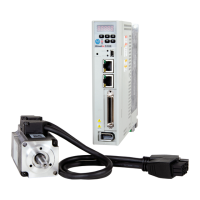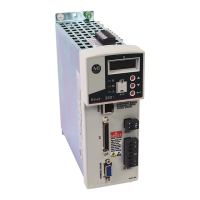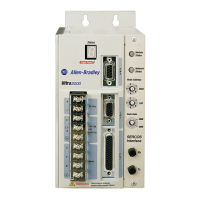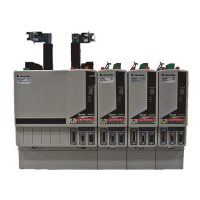Rockwell Automation Publication 2198-UM004A-EN-P - October 2019 343
Motion Control Applications Chapter 12
• Deceleration stop after disengagement (ID376 (P5.088.U) = 6) — The
clutch is disengaged and decelerates smoothly to stop when the number of
pulses of master axis reached the value set by ID377 (P5.089). Then the E-
Cam system enters the stop state, as shown in Figure 169
. This
disengagement condition is suitable for the application where the slave axis
must be slowly decelerated to a stop.
Figure 169 - Deceleration Stop After Disengagement
• Entering loop mode after disengagement (ID376 (P5.088.U) = 4) — The
clutch enters the loop mode when the number of pulses of master axis
reached the value set by instance ID377 (P5.089)
ECamMasterPositionToDisengage. Then the E-Cam system enters the
pre-engage state, as shown in Figure 170
. The clutch engages again and
operates the next motion cycle when the number of skipped master
position pulses before re-engage reached the value set by ID380 (P5.092)
ECamSkippedMasterPulses.
Figure 170 - Loop Mode After Disengagement
Pay attention to the difference between the lead pulses before engaged (ID375
(P5.087)) and the skipped master position pulses before re-engage (ID380
(P5.092)). ID375 (P5.087)takes effect only before the first engagement,
however, ID380 (P5.092)takes effect each time in a motion cycle before
engagement. Figure 171
shows the schematic diagram of the combination of
these two.

